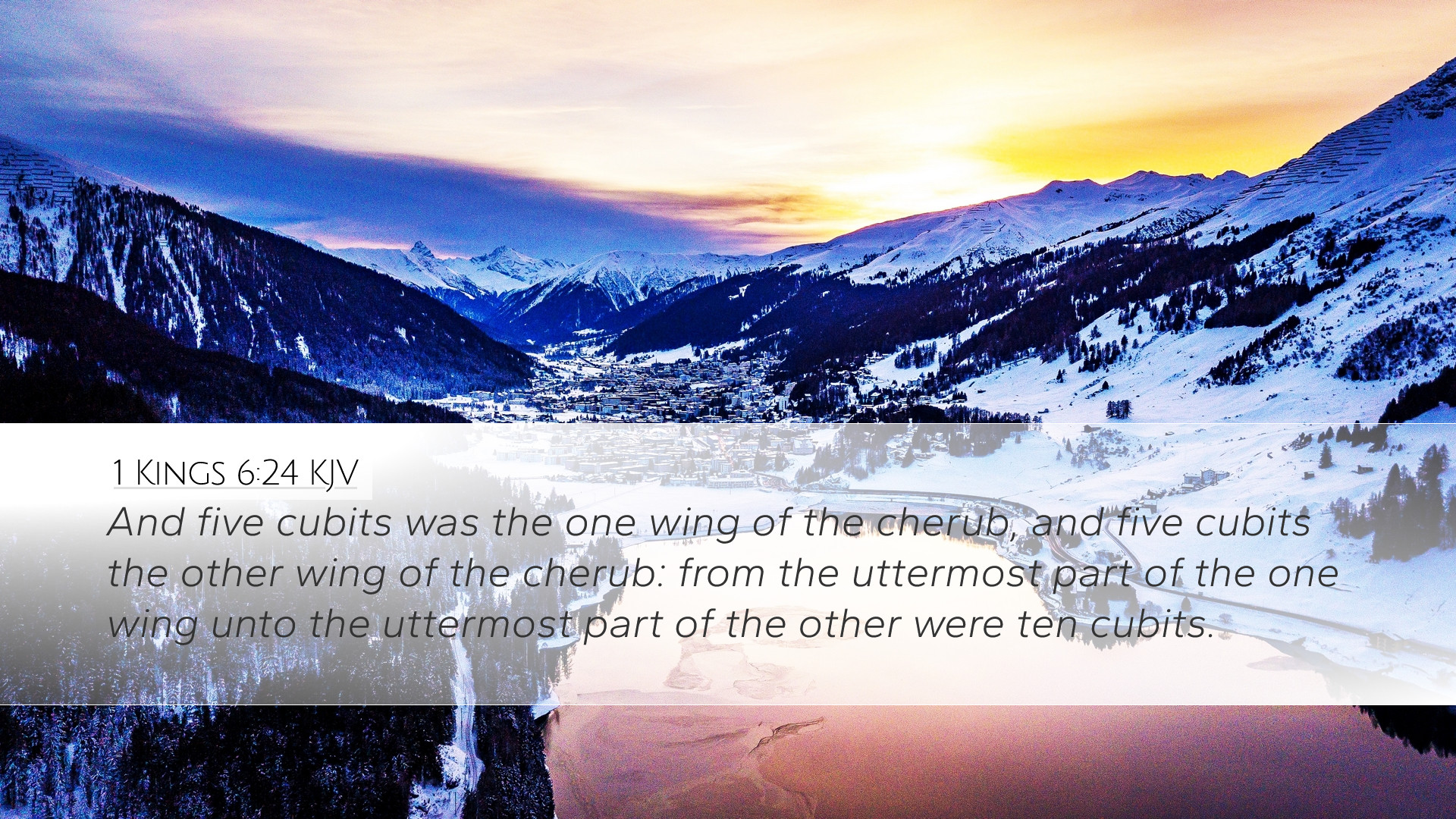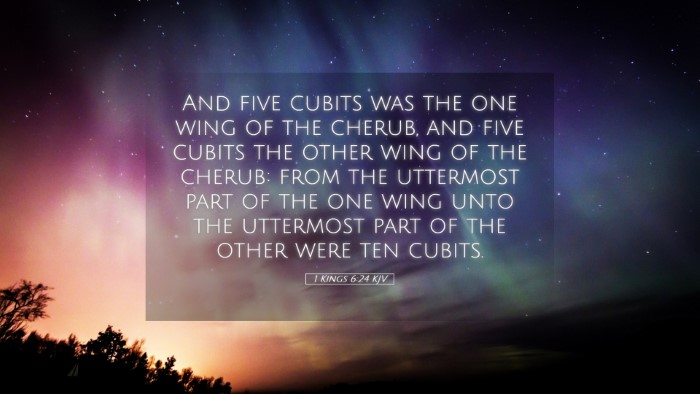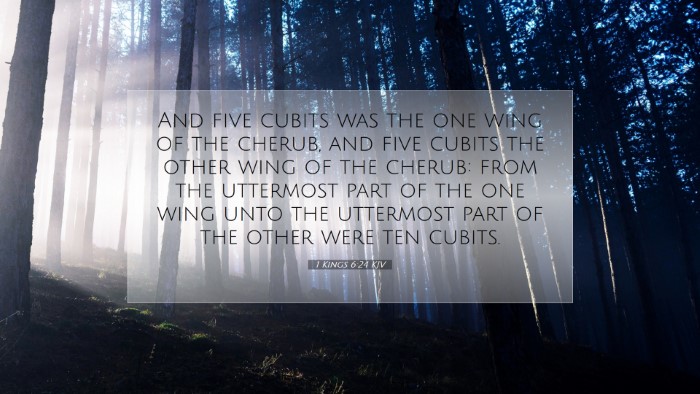Commentary on 1 Kings 6:24
Verse: "And the two leaves of the one wing were five cubits long, and the other wing of the cherub was five cubits long: ten cubits from the uttermost part of the one wing unto the uttermost part of the other." (1 Kings 6:24 KJV)
Contextual Background
This verse is nestled within the account of Solomon's temple construction, which is a significant event in Israel's history. The building of the temple signifies a pivotal moment where God chooses to dwell among His people in a permanent place, a vast contrast to the portable tabernacle. The intricate details surrounding the temple's architecture, including the cherubim mentioned, serve not only aesthetic purposes but also theological implications about God's holiness and glory.
Insights from Public Domain Commentaries
Matthew Henry’s Commentary
Matthew Henry, in his expository notes, draws attention to the symbolism and significance of the cherubim within the holy structure. He emphasizes that the cherubim, representing the guardianship and realm of God's glory, reflect both the majesty and the mystery of God’s presence. Henry notes that the size of the cherubs is indicative of their role; the wingspan of ten cubits emphasizes their grandeur and the vastness of God's protective presence over the sanctuary.
Albert Barnes’ Notes
Albert Barnes takes a keen interest in the measurements provided in this verse. He elucidates that these dimensions not only reveal the grandeur of the architecture intended for the temple but also the meticulous planning of Solomon. Barnes points out that the details highlight the intended purpose of the cherubim as majestic heavenly beings whose role was to serve in the immediate presence of God. He notes that the construction aligns with the heavenly symbolism existing in the ancient Near East, where cherubim were often associated with divine thrones.
Adam Clarke’s Commentary
Adam Clarke provides a detailed discussion on the significance of the cherubim's design. He suggests that the wings of the cherubim, stretching outward, symbolize the protection offered by God to His people, with the cherubim facing inward towards the mercy seat. Clarke emphasizes the theological implications of the construction, suggesting that it represents the convergence of divine holiness and human need for grace. Furthermore, he highlights how such design reflects not just architectural beauty but also the profound relationship between God and Israel.
Theological Implications
The construction of the cherubim within the temple is rich with theological layers. Their presence signifies God’s protective and sovereign nature while also revealing the tension between divine holiness and human sinfulness. The temple was to be a place where these realities coexisted, addressing God’s desire to dwell among His people while maintaining His sanctity.
Symbolism of the Cherubim
- Guardians of the Divine Presence: The cherubim acted as guardians of the Ark of the Covenant, which represented God's covenant with Israel.
- Symbol of God’s Sovereignty: Their form and design suggest heavenly beings who serve under God’s authority, emphasizing God’s rule over creation.
- Inward Facing Wings: The cherubim's wings, turned inward, indicate a focus on the mercy seat, illustrating God’s desire for reconciliation with humanity.
Lessons for Spiritual Reflection
For pastors, students, and theologians, a deeper examination of 1 Kings 6:24 invites reflection on God’s majesty. The intricate design of the temple and the cherubim can serve as a reminder of God's desire for intimacy with His people. It provokes questions about how today's worship spaces reflect the character of God:
- Worship and Reverence: How do our worship spaces convey the holiness of God?
- Protection and Guidance: In what ways does our understanding of God as a protector influence our faith and community?
- Grace and Mercy: How can we embrace the mercy shown to us and reflect that in our relationships with others?
Conclusion
The cherubim in 1 Kings 6:24 serve as an architectural and theological landmark that encapsulates essential truths about God’s nature and His relationship with humanity. Such insights, drawn from the teachings of renowned commentators like Matthew Henry, Albert Barnes, and Adam Clarke, encourage us to approach Scripture with reverence and awe. As we contemplate the implications of this verse, may we be inspired to foster a deeper relationship with God, recognizing both His grandeur and His desire for closeness with His people.


